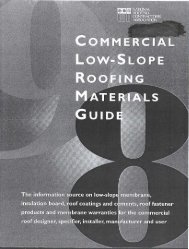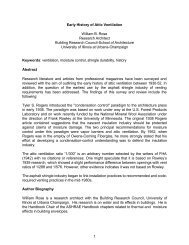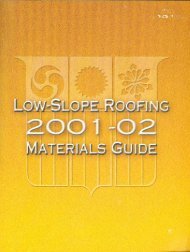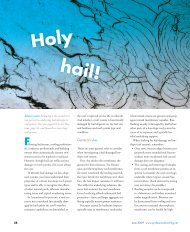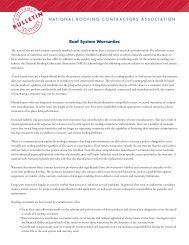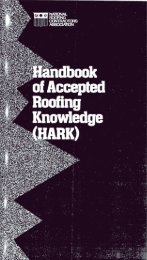New Test Method To Assess The Walkability Of Roof Insulation Boards
New Test Method To Assess The Walkability Of Roof Insulation Boards
New Test Method To Assess The Walkability Of Roof Insulation Boards
You also want an ePaper? Increase the reach of your titles
YUMPU automatically turns print PDFs into web optimized ePapers that Google loves.
EVALUATION AND DRAFT CLASSIFICATION<br />
Based on the results found at the development of this test method and the experience<br />
of the experts of BDA, the following criteria for the properties of the insulation boards<br />
after testing have been drafted.<br />
Thickness: - Maximum allowable decrease of thickness: 10 percent, but not more than<br />
10 mm<br />
Compressive strength: - maximum allowable decrease: 25 percent<br />
Classification<br />
<strong>To</strong> classify roof insulation boards with respect to their intended use, a classification<br />
system has been drafted as given in Table 5.<br />
Table 5. Draft classification system<br />
Class<br />
Number<br />
of cycles<br />
Intended use of the roof<br />
1 10 Only accessible for purpose of maintenance; may be used<br />
without any restrictions<br />
2 30 Accessible to pedestrian traffic; may be used where frequent<br />
maintenance of equipment is envisaged<br />
3 100 Accessible to lightweight vehicles; only to be used where the<br />
waterproofing is protected by concrete pavers or similar<br />
protection<br />
FURTHER RESEARCH<br />
Laboratory tests, though always meant to predict the behaviour of products in practice,<br />
can never exactly simulate practice. <strong>To</strong> make results clear, it is recommended to<br />
exaggerate practice to obtain a wider scale and be able to interpret the results easier.<br />
However, a test must never be so severe that the results lead to the other extreme,<br />
such as in the case of 30 cycles and more, the total damaging of the MWR insulation<br />
product. Also, in that case, no interpretation is possible.<br />
<strong>The</strong> appearance of the MWR insulation after 30 cycles and 100 cycles was judged to be<br />
not realistic. This appearance is caused, among other reasons, because the vertically<br />
applied forces develop transverse forces inside the test specimen. This results in the<br />
falling apart of the specimen first at the edges and, subsequently, over the entire<br />
specimen.<br />
8




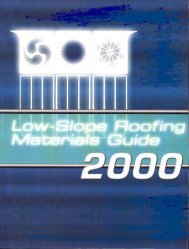
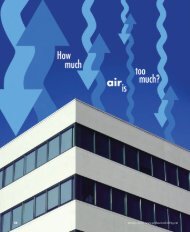

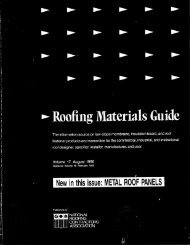
![Wm] - National Roofing Contractors Association](https://img.yumpu.com/36696816/1/190x245/wm-national-roofing-contractors-association.jpg?quality=85)

